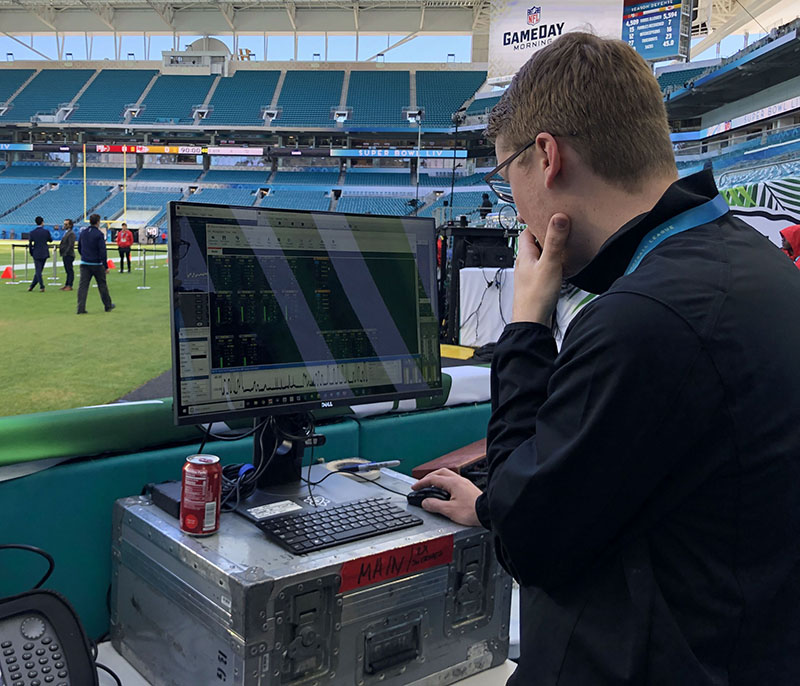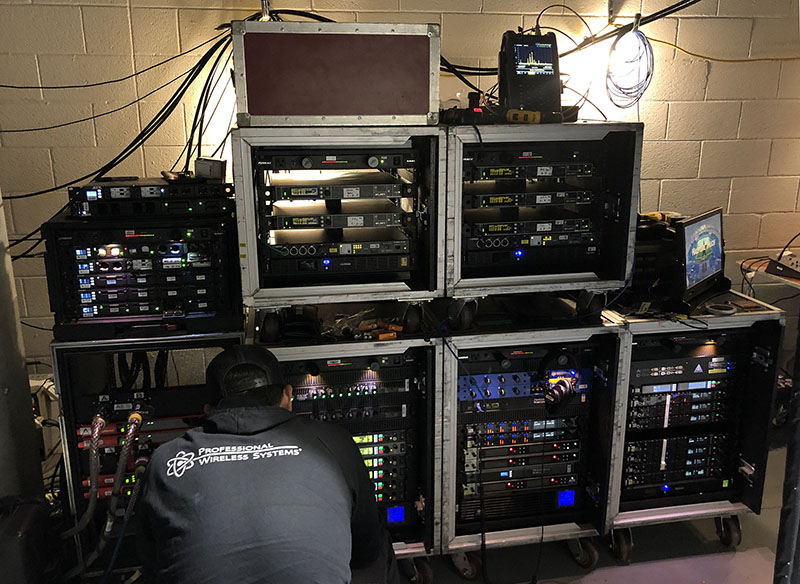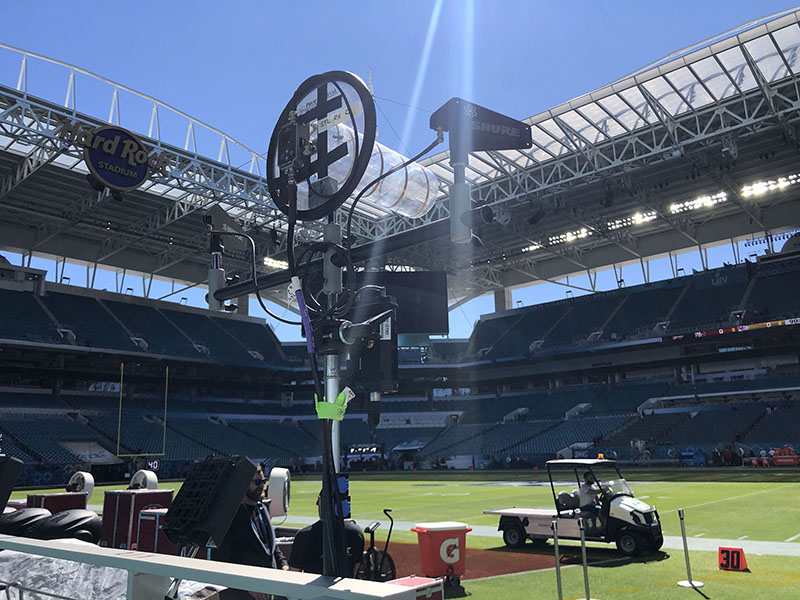For 24 months, audio professionals in the United States – wireless and RF folks in particular – have been talking about the impact the 600 MHz auction, and resulting TV repack (transition of TV channels out of 600 MHz), will have on the use of wireless microphone, in-ear and intercom systems across the country. Although there are still some choosing to ignore the changing RF landscape, most have been watching closely as cities make the transition (deadline July 3, 2020) and noting how it impacts production planning.
Super Bowl LIV this past February at Hard Rock Stadium in Miami was of particular interest. The big game took place in a city that had transitioned out of 600 MHz and was left with substantially less available RF spectrum than ever before. The Super Bowl is known for high-end production values, especially during the halftime show. All eyes were on Miami to see how the wireless team would do it.
“I can’t even tell you an absolute channel count because bandwidth was so tight, it was actually being assigned by time of day at certain points,” explains John Cave, vice president, information technology for the National Football League (NFL). “I can tell you that we received 1,048 requests for frequencies during the game, with 900 of them coordinated. Our team worked extremely hard with everyone on site to ensure that they had what they needed when then needed it. There was quite of bit of creative thinking as well as cooperation between different organizations to make sure the event went off without a hitch.”
Ahead Of The Game
The NFL has been working with the same production partners for more than 20 years. This year was no different, with ATK Versacom responsible for wireless intercoms and ATK Audiotek (both of Valencia, CA) managing sound reinforcement for both the pre-game, halftime and post-game entertainment.
In turn, the ATK team – including general manager Brett Valasek, production manager Paul Liszewski and crew chief George Schwartz – tapped Orlando-based Professional Wireless Systems (PWS) to manage the wireless microphone and IEM systems, along with the wireless systems for on-field game officials. The Professional Wireless crew included general manger Jim Van Winkle, lead RF technician Gary Trenda, and RF techs Cameron Stuckey and Kasey Gchachu.

“The first thing we always do is a thorough site visit, this time at the end of September,” explains Van Winkle, general manager for PWS. “It’s important to see where our field RF position will be located, as well as to scout out locations for antennas and cabling. Most importantly, we get a good look at the available RF spectrum. We knew we were working in a post transition world. The days of not worrying about spectrum availability are over.”
Van Winkle worked with Trenda to determine overall wireless needs and how they would use the available RF spectrum. “It’s important to keep in mind the number of wireless users at the Super Bowl in addition to halftime entertainment,” Trenda notes. “It’s not just us. Broadcasters use a lot of wireless, IFB, and intercom. Fox Broadcast, NFL Network, and NFL Films – microphones on the sidelines, parabolic mics and more – also need frequencies. NFL Films has wireless mics on the players as well as camera crews on the sidelines. It’s a challenge, and it’s important that everyone works together.”
Trenda continues, “We did a thorough RF scan in Miami and realized availability in the UHF TV band was extremely limited. The small amount of space available in the UHF TV band would be taken by other users, so all of UHF TV (470 to 608 MHz) was essentially full. Sometimes you can operate on a low power DTV channel, but Hard Rock Stadium is very close to a number of TV broadcast towers and we wouldn’t get the reliability we want for the Super Bowl, so we decided to get creative.”

Available Options
One solution PWS implemented was to apply for a STA (Special Temporary Authorization) from the FCC to operate in unoccupied bandwidth in the 600 MHz range. There was some unused spectrum in that range ideal for in-ears monitors. Utilizing older Shure IEM systems (that still operated in 600 MHz) was the solution. Although not an option for day-to-day, the STA cleared their use during the game.
Another solution was to operate in the STL (Studio to Transmitter Links) band of 941.5 to 960 MHz. Operation in this band requires a Part 74 license from the FCC and frequency coordination, but there was enough space for some of the wireless microphones needed for halftime.















